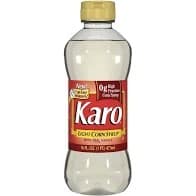
The creation of different dog breeds represents centuries of selective breeding to create true lines of dogs all with similar desired characteristics. Somewhere in all this breeding and selection, toy breeds were deemed desirable and were hence developed. Some typical examples of these very small dogs are Chihuahua, Yorkshire Terrie, Maltese, Toy Poodle, and Pomeranian.

And, of course, there are many others. Consider that if these dogs are so tiny as adults how tiny they must be as newborn puppies. These itty bitty babies tend to cut their baby teeth in late and thus have trouble chewing kibbled foods. They also have difficulty maintaining body temperature which promotes listlessness as they get cold. Both these factors combine into reduced food intake and difficulty keeping up normal blood sugar levels. Low blood sugar, which is called hypoglycemia, creates even more listlessness. Because the brain cannot burn fat or protein and relies almost entirely on sugar, the potential result includes incoordination, loss of consciousness and even seizures.
Before you Adopt
When you look at these darling miniature puppies, think twice before you adopt. The toy breed puppy is frequently a high maintenance project. This is not a living stuffed animal; this is a live creature with a handicap, at least until he or she has grown up a bit. You may need to feed this animal 4-6 times daily. Soft puppy foods are often needed as these puppies may not be able to eat hard food. They need extra warmth and it is important that you make an appointment with your veterinarian for a well-baby check up promptly.

Puppies of this size do not tolerate fleas. They are simply too small to have any blood to give away to blood sucking parasites. They need to be adequately dewormed and checked over for any signs of infectious disease. Diarrhea is common for puppies but a very tiny puppy cannot withstand the dehydration that accompanies diarrhea.
Pet store puppies are at higher risk for kennel cough and the pneumonia that sometimes accompanies it in severe cases. Diseases such as parvovirus or distemper are particular disasters for puppies of this size.
A young toy breed puppy presents more challenges than larger sized breed puppies. Toy breed dogs should be at least 8 weeks old for adoption. Ten weeks is even better when it comes to small sized dogs like these.
Preventing Problems
Assuming you already have a toy breed puppy, remember how sensitive to problems these puppies are. So, if your puppy is coughing, has diarrhea, is vomiting, has appetite loss or seems listless, waste no time in seeing the vet.
Be sure your puppy is eating and mentally engaged. If possible, look in your puppy’s mouth and see if there are any teeth. In particular, look for the molars and premolars along the sides of the mouth. These are teeth needed for chewing and they may come in late. This will not stop your puppy from lapping up soft food. Be sure the food you are using is soft enough and that your puppy will reliably eat it.
Nutrical: A Handy Supplement
This product is frequently provided by both veterinarians and breeders for use in toy breed puppies. It consists basically of a malt-flavored paste with sugar and vitamins. Some puppies will readily lap it off fingers and others will only take it if it is smeared on the roof of the mouth. If a puppy seems listless, the first thing to do is attempt feeding. If the puppy will not eat, a finger tip of Nutrical may make all the difference.
What to Do if you Think your Puppy Is Hypoglycemic

Potentially, hypoglycemia is an emergency. The puppy will be listless maybe even uncoordinated. If the puppy is conscious, start by offering delicious food that he or she will want to eat. This may be all you have to do to avert catastrophe if the puppy will accept the meal. If you have Nutrical® as described above, this would be a great time to use it. In an extreme case, the puppy will become cold, will lose consciousness and begin to have seizures.
For first aid, a small amount of Karo syrup can be rubbed on the gums. (It will absorb through the gums; actual swallowing is not necessary). Beyond this and especially if the puppy does not fully regain its normal playful attitude, the puppy should be rushed to an animal hospital for treatment.
In the hospital, the puppy will be warmed and a blood sugar level checked. If intravenous access is possible, dextrose will be infused directly into the blood stream. Response is generally rapid once sugar is supplied in this way and a sugar drip or regular sugar injections will be continued. But the puppy has to reliably eat before he can go home. Anticipate the need for 24 hour care and expect a few days of care.
Sometimes there is more to hypoglycemia than just low blood sugar. While being extra small and extra young is enough to drop blood sugar, sometimes there is more to the story such as a liver shunt, parasitism or other causes of gastrointestinal upset.
After an episode of low blood sugar whether hospitalized or able to be treated as an out-patient, it is important to watch food intake and be aware of any changes in energy level. As your puppy gets bigger, risk factors diminish. If another underlying disease isn’t present, over time, as your puppy matures, hypoglycemia risks become minimal and the puppy can continue life as any other puppy..


